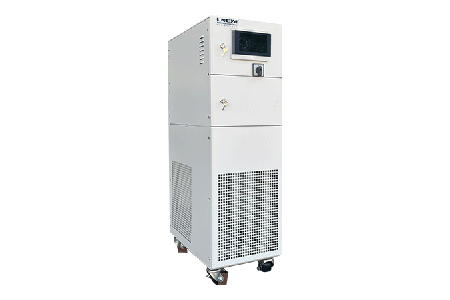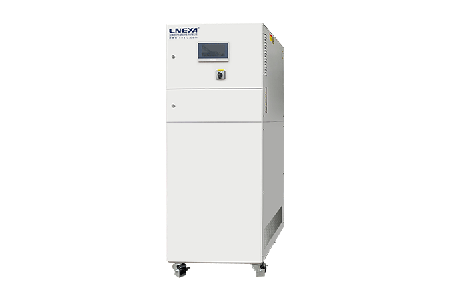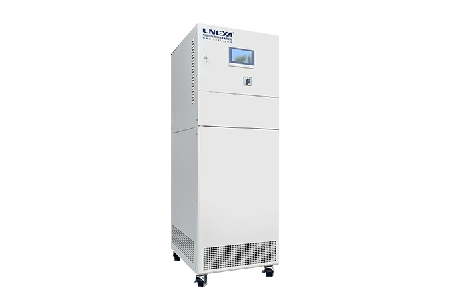What are the environmentally friendly refrigerants?
Chillers and HVAC systems provide cooling because they contain refrigerants. However, some refrigerants can damage the ozone layer.
With the improvement of environmental awareness and the promulgation of environmental protection laws and regulations, ozone-depleting refrigerants are being phased out and replaced by environmentally friendly refrigerants.
What are environmentally friendly refrigerants? What are the common eco-friendly refrigerants? What are their benefits? This article will introduce them to you.

What Is Environmentally Friendly Refrigerant?
Environmentally friendly refrigerants are more environmentally friendly while meeting cooling needs. Whether a refrigerant is environmentally friendly is usually determined by two indicators: ozone depletion potential (ODP) and global warming potential (GWP). Environmentally friendly refrigerants have very low ODP and GWP values.
In addition, they are low in toxicity and easy to degrade. Even if a leak occurs, the long-term impact on humans and the environment is relatively small.
- Ozone Depletion Potential (ODP) – It is usually based on CFC-11 (ODP=1). The larger the value, the more destructive the refrigerant gas is to the ozone layer.
- Global Warming Potential (GWP) – This number is based on the GWP of carbon dioxide (CO2). Consider the GWP of carbon dioxide to be 1 – that is, the amount of heat that 1 kg of carbon dioxide releases into the atmosphere over a certain period of time (usually 100 years). Compare other refrigerants to the GWP of carbon dioxide. For example, R-134a has a GWP of 1430, which means that its greenhouse effect per unit weight is 1430 times that of carbon dioxide.

Common Environmentally Friendly Refrigerants
Hydrofluoroolefin (HFO) and natural refrigerants are environmentally friendly types of refrigerants.
HFO have 0 ODP , will not damage the ozone layer, and have a very low GWP, some of which are even less than 1.
Natural refrigerants include propane (R-290), , carbon dioxide (R-744), and ethylene (R-1150), etc. Their ODP is 0, and their GWP values are generally very low, with little impact on the greenhouse effect.
The following is a list of common environmentally friendly refrigerants and their ODP and GWP values:
| Refrigerant name | Type | ODP | GWP(100 years) |
| R-290(Propane) | Natural refrigerant | 0 | ≈ 3 |
| R-600a(Isobutane) | Natural refrigerant | 0 | ≈ 3 |
| R-744(Carbon dioxide) | Natural refrigerant | 0 | 1 |
| R-717(Ammonia) | Natural refrigerant | 0 | 0 |
| R-1270(Propylene) | Natural refrigerant | 0 | ≈ 2 |
| R-1234yf | HFO | ≈ 0 | ≈ 1 |
| R-1234ze(E) | HFO | ≈ 0 | ≈ 6 |
| R-513A | blend refrigerants | 0 | ≈ 573 |
Benefits of Using Environmentally Friendly Refrigerants
Comply With Regulations
Using sustainable refrigerants that comply with environmental regulations can save your company from environmental fines and regional sales restrictions.
Environmentally Friendly
Environmentally friendly refrigerants help you and the companies that use your products reduce greenhouse gas emissions.
Improve Refrigeration Efficiency
Most environmentally friendly refrigerants have much higher refrigeration efficiency than traditional refrigerants. Moreover, you can fill less environmentally friendly refrigerants to achieve the cooling capacity of traditional refrigerants.
Improve Brand Image
Companies that use environmentally friendly refrigerants focus on sustainable development and have established a corporate image of actively taking environmental responsibility. Many users will choose them.
Want To Learn More?
Communicate with LNEYA refrigeration experts to learn more about refrigerants and choose the right refrigerant for your application.
Add our account manager via the QR code below

WeChat/Phone
86 18914253067

86 13912479193

Email Address
sales@cnzlj.com
Recommended chillers

LTZ +5℃-90℃
glycol chillers
Cooling capacity 4kW~20kW
Heating power 3.5kW~15kW
temperature accuracy ±0.3℃

LTZ -40℃~90℃
fluid chillers
Cooling capacity 0.7kW~11.5kW
Heating power 2.5kW~10kW
temperature accuracy ±0.3℃

LTZ +5℃~30℃
laboratory chillers
Cooling capacity 23kW~155kW
Circulation Pump MAX 5m³/h~28m³/h 2bar
temperature accuracy ±0.5℃

LTZ -25℃~30℃
sub zero chillers
Cooling capacity 7kW~64.5kW
Circulation Pump MAX 2.5m³/h~15m³/h 2bar
temperature accuracy ±0.5℃

LTZ -45℃~20℃
coolant chillers
Cooling capacity 5.7kW~32.4kW
Circulation Pump MAX 1.5m³/h~7.7m³/h 2bar
temperature accuracy ±0.5℃

LTZ -60℃~-30℃
air cooled chillers
Cooling capacity 6.2kW~31.7kW
Circulation Pump MAX 2.4m³/h~12.1m³/h 2bar
temperature accuracy ±0.5℃

LTZ -80℃~-50℃
water cooled chillers
Cooling capacity 3.7kW~30kW
Circulation Pump MAX 2.3m³/h~12m³/h 2bar
temperature accuracy ±0.5℃

LTZ -115℃~-80℃
cryogenic chillers
cooling capacity 0.6kW~2.8kW
Circulation Pump MAX 20L/min~40L/min 2bar
temperature accuracy ±0.5℃
 LNEYA Industrial Chillers Manufacturer Supplier
LNEYA Industrial Chillers Manufacturer Supplier










